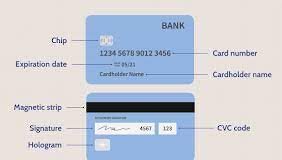There are countless credit cards to choose from, for all different types of spending and budgets. As such, it’s important to know your spending habits and which aspects of your financial life you’re looking to bolster by utilizing a credit card. Take a look at the typical features of each type of credit card.
1. Travel credit cards
Travel credit cards offer amenities and perks aimed at making your trips less stressful and expensive. They earn points or miles which you can redeem for travel.
Depending on the annual fee, a travel card may also include perks such as travel accident insurance, rental car insurance, airport lounge access, annual statement credits and access to Global Entry or TSA PreCheck to get you through airport security much faster. Basically, the more expensive the card, the more extensive its benefit offering.
2. Introductory APR credit cards
Avoiding interest is the name of the game with introductory APR credit cards. They offer 0% interest promotional periods for new cardholders that helps you avoid paying interest charges on balance transfers or new purchases.
These introductory offers usually last anywhere from nine to 21 months. During that window, your credit card balances won’t accrue interest allowing you to pay them down more effectively.
Introductory APR cards tend to have higher credit requirements than standard credit cards, but they can be a great way to finance large, planned purchases or to eliminate some existing credit card debt.
3. Balance transfer credit cards
Balance transfer credit cards provide cardholders with an opportunity to get rid of some of their existing credit card debt.
By offering a 0% introductory interest rate for a set amount of time, balance transfer cards let you pay down a balance transferred from another credit card while avoiding the interest that it would normally accrue.
It’s important to note that most balance transfer credit cards require a balance transfer fee which is usually 3% or 5% of the transferred balance. There are credit cards without a balance transfer fee, but they tend to offer shorter introductory APR offers.
More often than not, paying a balance transfer fee will be more cost effective than paying numerous interest charges on a credit card with a high APR.
4. Rewards credit cards
Rewards credit cards bolster your everyday spending by offering rewards on your spending. There are rewards credit cards with annual fees and without; more expensive cards typically offer higher rewards rates..
Depending on the card, you might earn rewards as cash-back or points, which you can turn into statement credits, gift cards, travel and more.. Rewards redemption rates may vary from card to card.
5. Cash-back credit cards
Cash-back credit cards are very similar to rewards credit cards, only they earn their rewards exclusively as cash back. Cash back cards typically have fewer redemption options, sticking primarily to statement credits or bank deposits.
They also differ in how much the rewards are worth. Points can typically vary in how much they’re worth, whereas cash back tends to equate to 1% cash back being worth 1 cent per dollar spent.
Cash-back credit cards either offer a flat rate for all purchases or a higher rate for specific purchases in bonus categories. Some cash-back cards also include purchase protections or introductory APR offers.
6. Airline credit cards
Airline credit cards are co-branded credit cards, which means an airline brand teamed up with a credit card issuer to provide cardholders with rewards and perks for a specific airline. They usually include perks like priority boarding, in-flight discounts, annual statement credits or application fee credits for Global Entry or TSA PreCheck.
7. Hotel cards
Just like airline credit cards, hotel credit cards are co-branded cards but with hotel brands. They offer higher rewards at their respective hotel properties and may include access to hotel loyalty programs that provide point-earning bonuses and extra amenities for cardholders.
8. Store credit cards
Store or retail credit cards are rewards cards co-branded with a specific store. They provide rewards and perks centered on the store they’re issued from. These can include cash back or specific discounts and perks like 2-day shipping or extended warranties. They’re typically easier to qualify for than standard credit cards, but have less favorable terms including higher-than-average APRs and extra fees.








